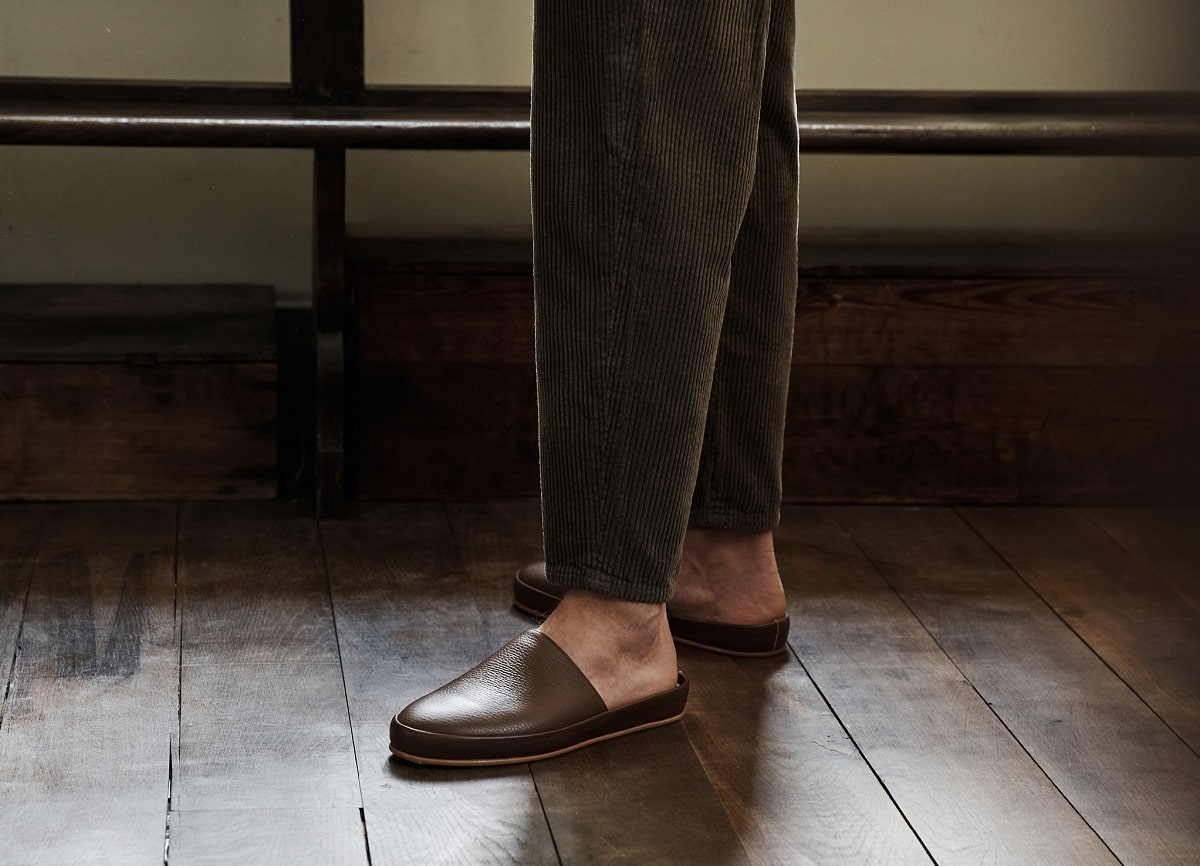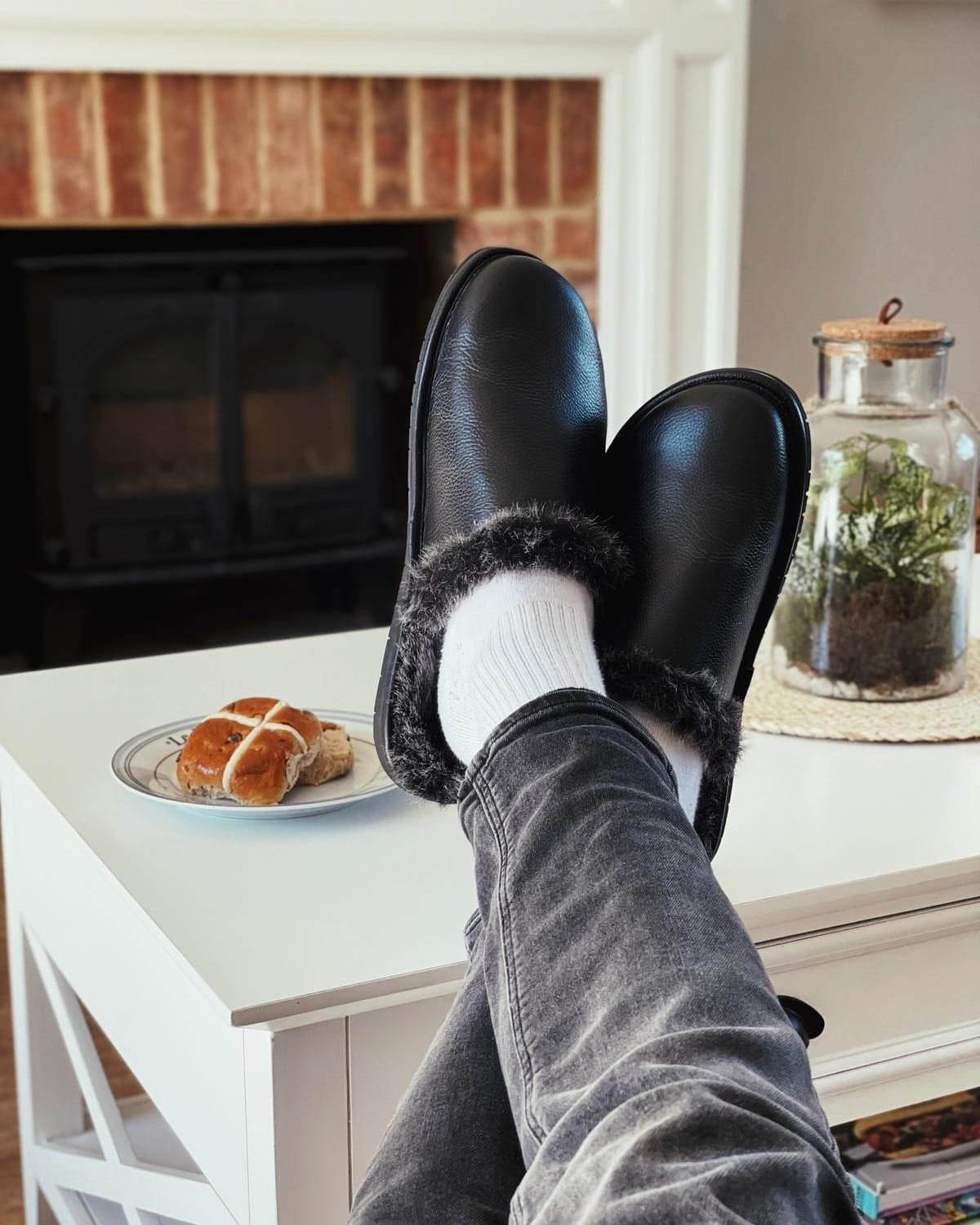1
HOME > Health & Fitness >
SLIPPERS ARE HARMING YOUR JOINTS AND MUSCLES
Written by Christophe Champs in Health & Fitness on the 20th December 2022

We all love our slippers, comfy and — feet go in and out within seconds — but this doesn’t make them the healthiest form of footwear. Their shape is not supportive and the materials they are made of are not reinforced. Ideally anything you have on your feet for a long period should offer proper support and protection. Providing your feet, which make up one quarter of your skeleton, with minimal support can negatively affect your aging body (however young you are). Slippers can also contribute to falls. And as older and more vulnerable people are the number one users of slippers and the most at risk of a fall, it is not a great combination.
The more support your shoes can give you the less unbalanced and unstable you will be and, therefore, the less likely you are to slip, trip or fall. And this applies to any age group. So, choose a pair of comfy shoes for indoor wearing that offer support and then use them as you would a comfy pair of slippers.

Health issues
With every step you take in slip-on shoes, your toes are forced to grasp the slipper to lift it off the ground and carry it until your next step. This is because your heel is not grabbed by the footwear. When the heal is secured within the shoe it helps to lift the entire shoe and carry it forward even as you bend your foot. Your forefoot is beautifully designed to change direction and adapt to uneven surfaces, but this clever skill should never be overloaded or overused in the way it is with a slip-on slipper. Those who spend a lot of their time on their toes or using their toes to grasp as they walk, often develop toe deformities such as hammer toe and bunions. Plus, the skin under the ball of your foot, as an auto-defence, tends to build up and become hard to cope with the extra pressures applied on the area.
Safety issues
Slippers aren’t just bad for your feet – the impact can also be felt around the ankle and upwards to your knees, hip, back and even your neck. Your ankles are the most challenged and challenging joints of your body because they connect two small horizontal feet with a tall and vertical body. Any time one of your ankles is unstable, every joint above is impacted. Overlooking your ankle stability is like neglecting the first impression you’ll make when entering a room. Both will leave you with no second chance and things could go wrong. An unstable ankle drags knees and hips down, inwards or outwards depending on your body type.

Orthotics
In my opinion, orthotics are great for most people’s feet, but they are not enough for your ankle health without proper shoes and pretty close to useless in a pair of slippers. Orthotics and shoes work together. They are designed to be inside the shoe, and this is one of the key reasons you should never try orthotics or insoles directly on the floor (i.e., not in the shoe) with the foot on top. The firmness of the shoe sole and the action of the laces or Velcro are both part of the foot support that provides you with a better alignment, balance, and overall posture. A pair of slippers with no heel or ankle support does not strap your foot and so the orthotics are not wrapped around your heels and arches. Therefore, if you tried to wear your orthotics in your slippers, you would miss out on this snug and pleasant feeling that reinforces the action of the orthotics and optimises their results. And of course, if the slipper has no back, the orthotics will simply fall out!
Alternatives
Start by wearing supportive and lace-up shoes in the house. These should support, protect and cushion the foot. They should stay on the foot as you walk: no toe curling. Remember, shoes are like glasses, they help only if you wear them and only if they fit you well. To address your asymmetry, which is common in most people, within your symmetrical shoes, contact your local podiatrist to have your biomechanics checked and find out if you can benefit from custom orthotics. Save walking barefoot for sandy beaches or your fresh mowed lawn, and slippers for putting your feet up in front of the TV.

Slip-on shoes are not great if you spend most of your day standing or walking. Indoor slip-on shoes, like slippers, are soft and unsupportive and should be worn sparingly. For general, in-house use, choose proper footwear that will support your ankles and take the strain off your joints. If you want to wear slip-ons then it is possible to get a custom orthotic sealed to the shoe which will help, but still isn’t ideal as you won’t get the full lateral support you need. Some shoe brands do offer more support than others, for example Birkenstock Milano or Kalahari, and TOMS, so sandal versions of these are an option. Alternatively, look for shoes with outer soles that are firm, can’t be twisted and only bend under the ball of your foot. Whatever indoor shoes you choose, ensure your posture is correct by seeking professional advice. A lot of emphasis is put on correcting our sitting position at a desk, and we tend to think we’re okay if we have a standing desk, but this isn’t the case. Just as much attention should be paid to your standing position, especially if you are standing for long hours at your desk (or anywhere else).
Christophe Champs is a consultant in Podiatry and Biomechanics, and the founder of PODO Clinic and Workshop. Christophe works with clients to help correct postural and biomechanical issues that are causing pain or putting a client at risk of injury. By testing both the moving gait and the still posture Christophe can correct misalignment and asymmetry through creating custom-made orthotics to suit the exact needs of each individual client.
Trending
2
3
4
5
6
7
8
9
10









